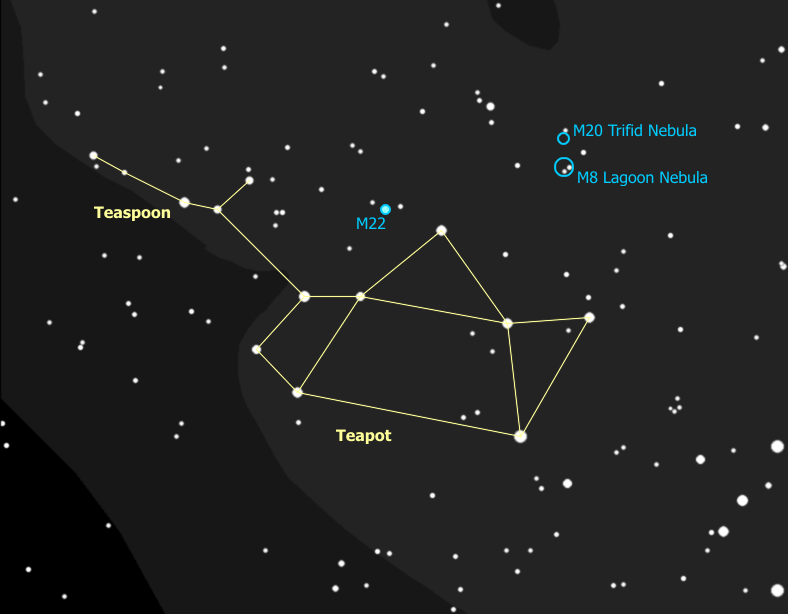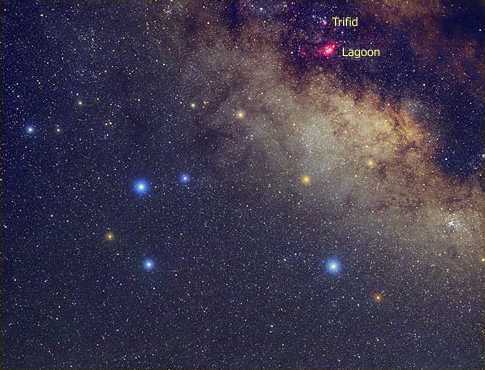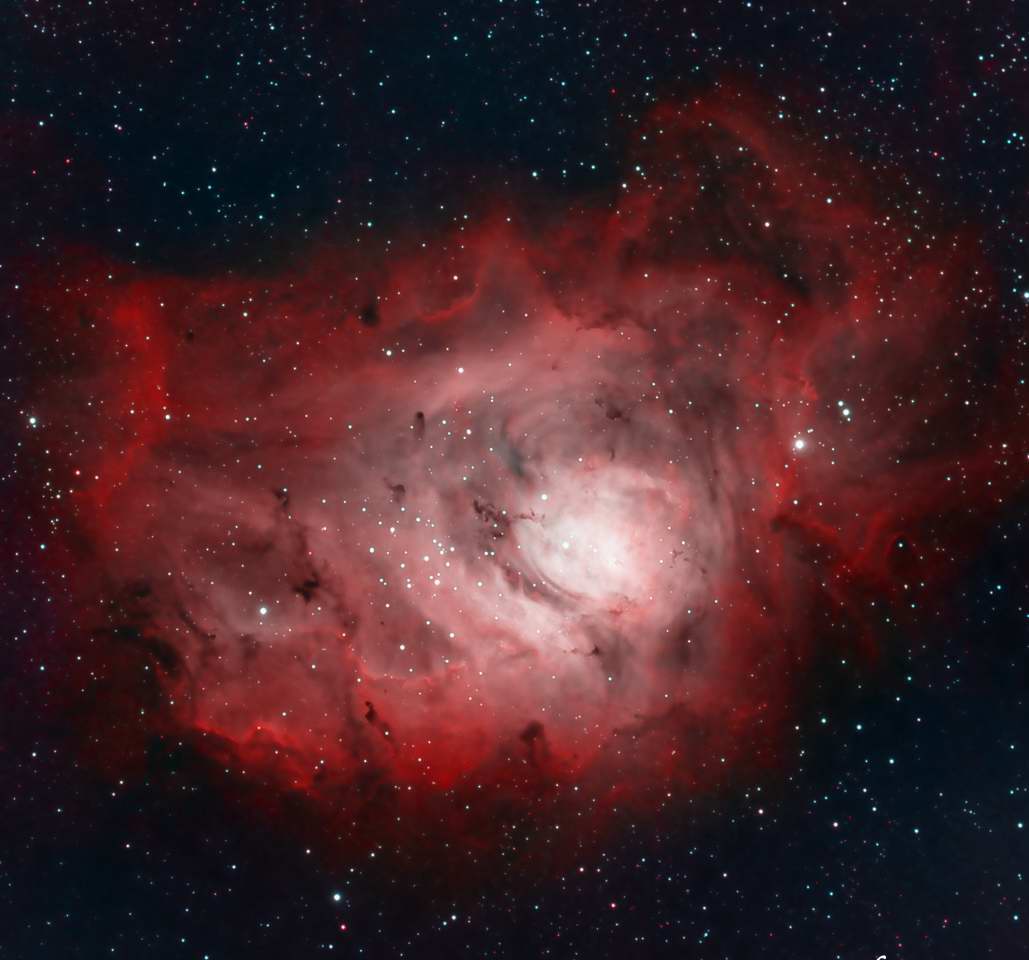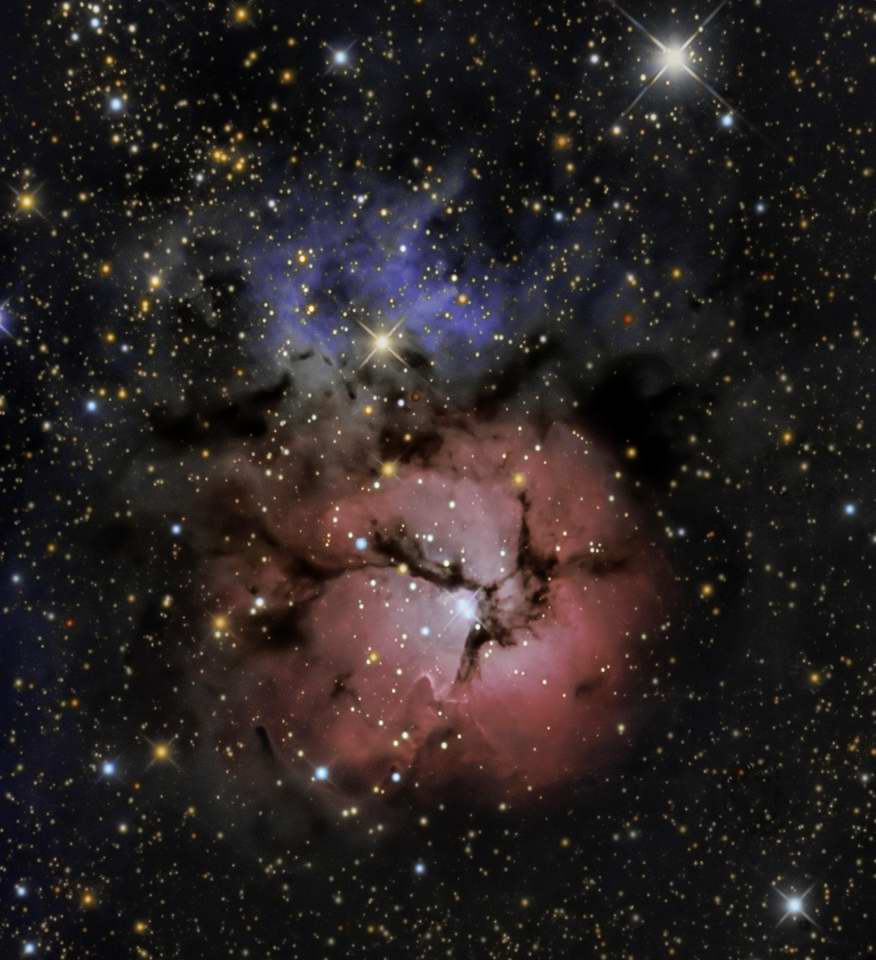Stargazing

|
The Constellation Sagittarius |

|
- The center of our galaxy is located to the South, in Sagittarius. You
can't see the entire constellation of Sagittarius but you can see the key
asterisms, the Teapot & Teaspoon. {Trace out the Teapot and the Teaspoon.}

Sagittarius is our second Zodiac constellation. It is an archer that is a centaur -- getting ready to shoot the giant scorpion next to him. The front of the teapot is his bow and the tip of the spout is the tip of his arrow. The rest of the constellation doesn't look anything like an archer or a centaur. Not a problem - people only reference the Teapot in Sagittarius, just as they talk about the Big Dipper, instead of Ursa Major.

- The bright region of the Milky Way that looks like steam coming out of the spout of the Teapot marks where the center of the galaxy is, about 30,000 light years away.
- If you look at the top of the spout through binoculars then slowly scan up
from there, you will come across the Lagoon Nebula (M8) and then the Trifid
Nebula (M20). These are diffuse nebulae - clouds of dust and hydrogen gas
- the stars you see in them are formed from the gas when it condenses together
and compresses due to gravity then, under pressure, heats up and ignites.
Nebulae like these, then, are the birthplaces of stars.
This region of the sky, Sagittarius and its neighboring constellations, happens to be one that is dense with nebulae and young stars. The only other region of the sky with this much new-star formation activity is Orion and its neighboring constellations.
Lagoon Nebula in Long-Exposure Photograph Trifid Nebula in Long-Exposure Photograph 

- If you put the binoculars right on the star at the top of the teapot, and
slide to the left until the star is at the right edge of your field of view,
then right in the center you will see a smudge of light. This is M22, and
in a telescope you can see this is a dazzling ball made up of a half
million stars, 9600 light years away. It turns out that this is pretty
close for a globular cluster.
M22 is the closest Globular Cluster we can see. 
 |
 |
 |
| Back to Cepheus | Go to Summer Index | On to Scorpius |
Questions
Your questions and comments regarding the Stargazing section are welcome.
You can e-mail the author, Randy Culp for inquiries,
suggestions, new ideas or just to chat.
Updated 18 July 2023
